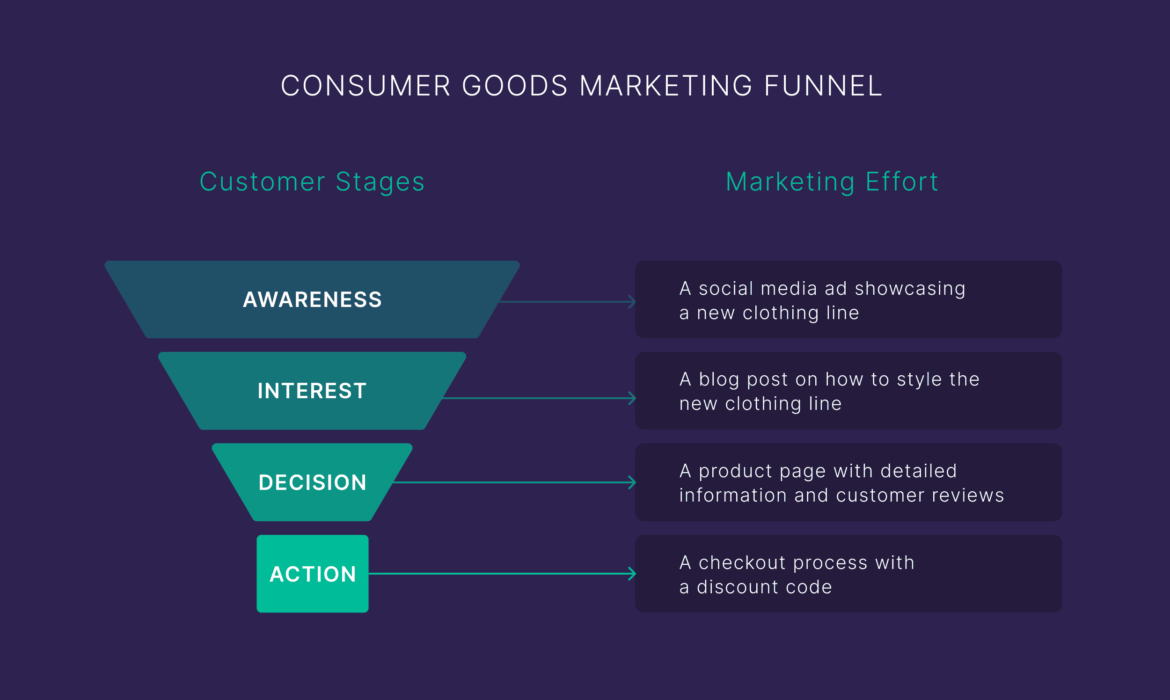How to Create a Digital Marketing Funnel: A Comprehensive Guide

In today’s highly competitive digital landscape, creating an effective digital marketing funnel is essential for nurturing prospects and converting them into loyal customers. Whether you are a startup or an established business, understanding and implementing a robust funnel strategy can drive measurable results. This guide will walk you through the fundamentals, strategic planning, and execution of a digital marketing funnel. By the end, you’ll know exactly how to create a funnel that aligns with your business goals, engages your target audience, and maximizes conversions.
Introduction: The Importance of a Digital Marketing Funnel
A digital marketing funnel maps out the customer journey from the first point of contact to the final conversion, such as a sale or a sign-up. Think of it as a step-by-step pathway that guides potential customers through different stages of engagement. In a highly dynamic market, your digital funnel must be both flexible and effective to ensure you capture and nurture every lead.
Digital marketing funnels are crucial because:
- They Organize Your Strategy: A well-structured funnel helps you visualize the customer journey, identify drop-off points, and optimize your marketing efforts accordingly.
- They Enhance Engagement: By addressing the specific needs of prospects at each stage, you build trust and encourage progression down the funnel.
- They Increase Conversions: A targeted funnel strategy ensures that your marketing efforts are aligned with customer intent, leading to higher conversion rates.
- They Optimize ROI: With clear metrics and tracking, you can refine each stage to maximize return on investment (ROI) and drive sustainable growth.
In this guide, we’ll explore what a digital marketing funnel is, why it matters, and provide a step-by-step process to create one that works for your business.
Understanding the Digital Marketing Funnel
Before diving into the creation process, it’s important to understand the concept and the key components of a digital marketing funnel. Typically, the funnel is divided into four main stages: Awareness, Interest, Decision, and Action (AIDA). Some models also include a post-action stage (loyalty/advocacy) that focuses on customer retention and repeat business.
1. Awareness
At this top-of-the-funnel (TOFU) stage, potential customers first learn about your brand. The goal is to cast a wide net by attracting as many relevant visitors as possible.
Key Tactics:
- Content Marketing: Blog posts, infographics, and videos that educate your audience.
- Social Media Campaigns: Engaging posts that build brand awareness on platforms like LinkedIn, Facebook, and Instagram.
- Paid Advertising: PPC ads or display ads that target a broad audience.
- SEO: Optimized website content that ranks well in search engine results for relevant queries.
2. Interest
Once awareness is established, the focus shifts to building interest. Here, your potential customers are exploring your content further and starting to consider whether your product or service can solve their problem.
Key Tactics:
- Email Marketing: Sending newsletters and follow-up emails that provide additional insights.
- Webinars and Live Demos: Interactive sessions that showcase your expertise.
- Case Studies and Testimonials: Real-world examples that demonstrate your value proposition.
- Targeted Content: Articles and guides that address specific challenges or pain points.
3. Decision
At the decision stage, prospects are evaluating options and determining whether to make a purchase. This is the time to provide persuasive content and clear calls-to-action.
Key Tactics:
- Landing Pages: Optimized pages designed to capture leads.
- Product Comparisons: Detailed comparisons that highlight your competitive advantages.
- Free Trials or Demos: Opportunities for potential customers to experience your offering firsthand.
- Discounts or Offers: Incentives to encourage a decision.
4. Action
This is the bottom-of-the-funnel (BOFU) stage where prospects convert into customers. The primary focus is to remove any final hesitations and facilitate a smooth transaction.
Key Tactics:
- Clear CTAs: Prominent buttons and links that prompt immediate action.
- User-Friendly Checkout Process: Simplified steps to reduce friction during purchase.
- Retargeting Ads: Reminders to nudge prospects who haven’t yet converted.
- Customer Support: Live chat or phone support to address last-minute concerns.
5. Post-Action: Loyalty and Advocacy (Optional but Essential)
While many funnels stop at the action stage, nurturing post-purchase relationships is key for sustainable growth.
Key Tactics:
- Follow-Up Emails: Thank-you notes and satisfaction surveys.
- Loyalty Programs: Rewards for repeat business and referrals.
- Engagement on Social Media: Encouraging customers to share their experiences.
- Educational Content: Providing ongoing value to help customers get the most out of your product or service.
The Process of Creating a Digital Marketing Funnel
Now that we understand the stages, let’s break down the process of creating your digital marketing funnel into actionable steps.
Step 1: Define Your Target Audience and Objectives
Start by identifying who your ideal customers are. Create detailed buyer personas that include demographics, behavior patterns, pain points, and online habits. Clear objectives are crucial—are you aiming to generate leads, drive sales, or build brand awareness? Your goals will shape your funnel strategy.
Key Questions to Ask:
- Who is my target audience?
- What are their primary challenges and needs?
- What actions do I want them to take at each stage of the funnel?
- How will I measure success (e.g., conversion rate, lead quality, ROI)?
Step 2: Map Out the Customer Journey
Visualize the steps your target audience takes from the moment they become aware of your brand to when they make a purchase. Mapping the customer journey helps you identify content gaps and opportunities to guide prospects smoothly through the funnel.
Techniques to Use:
- Customer Journey Mapping: Use tools like flowcharts or journey mapping software.
- Feedback Analysis: Gather data from customer feedback, surveys, and analytics.
- Competitor Research: Analyze how competitors guide their customers.
Step 3: Develop Engaging Content for Each Funnel Stage
Content is the cornerstone of your digital marketing funnel. Develop content that aligns with the needs of your audience at each stage.
For the Awareness Stage:
- Blog articles on industry trends and educational topics.
- Infographics that simplify complex data.
- Videos that introduce your brand and share your mission.
- Social media posts with engaging visuals and stories.
For the Interest Stage:
- Detailed guides and eBooks that delve into specific challenges.
- Webinars or live Q&A sessions.
- Customer testimonials and case studies.
- Email newsletters that offer exclusive insights.
For the Decision Stage:
- Landing pages optimized for conversions.
- Product comparison charts and in-depth reviews.
- Free trial offers, demos, or consultations.
- Discount codes or special promotions.
For the Action Stage:
- Clear, persuasive calls-to-action (CTAs).
- Streamlined checkout or sign-up forms.
- Retargeting emails and follow-up messages.
- Live support options to assist with last-minute questions.
For the Post-Action Stage:
- Thank-you emails and customer surveys.
- Loyalty and referral programs.
- Regular updates, tutorials, and product usage tips.
- Community-building efforts on social media.
Step 4: Leverage Automation and CRM Tools
To manage and optimize your funnel effectively, invest in marketing automation and CRM (Customer Relationship Management) tools. Automation streamlines email marketing, lead nurturing, and segmentation, ensuring that your prospects receive personalized content at the right time.
Popular Tools:
- Marketing Automation Platforms: HubSpot, ActiveCampaign, or Mailchimp.
- CRM Systems: Salesforce, Zoho CRM, or HubSpot CRM.
- Analytics Tools: Google Analytics and SEMrush for performance tracking.
Step 5: Implement SEO Best Practices
Optimizing your content for search engines is critical to driving organic traffic into your funnel. Incorporate semantic keywords and long-tail phrases naturally within your content. For instance, use variations such as “digital marketing funnel creation,” “customer acquisition funnel,” and “sales funnel strategy” alongside your primary keyword, “how to create digital marketing funnel.”
SEO Best Practices:
- Keyword Research: Use tools like Google Keyword Planner or Ahrefs to find relevant terms.
- On-Page Optimization: Optimize meta titles, descriptions, headers, and image alt texts.
- Internal Linking: Link to related blog posts or pages on your website.
- Content Quality: Ensure that your content is original, well-researched, and provides real value.
Step 6: Launch and Monitor Your Funnel
Once your funnel is set up, launch your campaigns across multiple channels. Continuously monitor performance metrics such as traffic, conversion rates, and engagement levels. Use this data to refine and optimize your funnel over time.
Key Metrics to Track:
- Awareness: Impressions, website visits, and social media engagement.
- Interest: Time on page, bounce rate, and email open rates.
- Decision: Landing page conversion rates and lead quality.
- Action: Sales numbers, customer acquisition costs, and ROI.
- Loyalty: Customer retention rates and referral metrics.
Step 7: Optimize and Iterate
Digital marketing is an ongoing process. Regularly review your funnel’s performance and experiment with different strategies. A/B testing, for example, can help determine which email subject lines, landing pages, or CTAs are most effective. Be prepared to iterate your approach based on analytics and feedback.
Optimization Strategies:
- A/B Testing: Continuously test different elements of your funnel.
- User Feedback: Conduct surveys and usability tests.
- Competitor Benchmarking: Stay informed about industry trends and adjust your strategies accordingly.
- Update Content: Regularly refresh your content to maintain relevance and improve search rankings.
Real-World Example: A Successful Digital Marketing Funnel
Let’s consider a hypothetical startup, “TechNova,” that specializes in innovative tech gadgets. TechNova needed to create a digital marketing funnel to attract and convert tech-savvy customers in a competitive market.
The Challenge
TechNova was new to the market and struggled with low brand awareness and limited online engagement. Their goal was to build a robust digital marketing funnel that would guide prospects from initial awareness to purchase while building long-term customer relationships.
The Approach
Awareness Stage:
- TechNova launched a blog featuring articles about tech trends and product innovations.
- They ran targeted social media campaigns on LinkedIn and Instagram.
- PPC ads were set up to drive initial traffic.
Interest Stage:
- The startup hosted webinars on emerging technologies and provided free downloadable guides.
- Email marketing was used to follow up with visitors who signed up for the webinars.
- Engaging video content was shared on YouTube to showcase product benefits.
Decision Stage:
- Landing pages were optimized with clear CTAs and detailed product comparisons.
- Free trials and limited-time offers were provided to incentivize sign-ups.
- Customer testimonials and case studies were featured prominently.
Action Stage:
- A simplified checkout process was implemented to reduce friction.
- Retargeting ads and abandoned cart emails helped recover lost leads.
- Dedicated customer support ensured that any last-minute queries were resolved promptly.
Post-Action Stage:
- Follow-up emails were sent to thank customers and request feedback.
- Loyalty programs and referral incentives encouraged repeat business.
- Regular newsletters kept customers informed about new products and exclusive offers.
The Results
Within six months, TechNova saw:
- A 70% increase in organic traffic.
- A 45% boost in email open rates.
- A significant improvement in conversion rates, with customer acquisition costs dropping by 30%.
- Enhanced customer loyalty and an uptick in referrals.
This case demonstrates that a well-planned and executed digital marketing funnel can transform a startup’s performance, even in a highly competitive industry.
Future Trends in Digital Marketing Funnels
As digital technology evolves, so do marketing funnels. Startups must remain agile and adapt to emerging trends to stay competitive.
1. Personalization at Scale
Advancements in AI and machine learning enable hyper-personalization. Future funnels will leverage detailed data analytics to create tailored content and offers that resonate on an individual level.
2. Multi-Channel Integration
Customers interact with brands across various platforms. Integrating channels—such as email, social media, SMS, and chatbots—ensures a seamless and unified customer experience.
3. Interactive and Dynamic Content
Interactive content like quizzes, polls, and live videos are becoming increasingly popular. These elements boost engagement, extend time on site, and provide real-time feedback.
4. Data-Driven Automation
Automation tools will continue to evolve, allowing for more precise targeting and real-time adjustments to marketing campaigns. This means that your funnel will continuously optimize itself based on live data.
5. Enhanced Customer Journey Mapping
Future digital marketing funnels will offer even deeper insights into the customer journey. Predictive analytics and advanced tracking will enable marketers to anticipate customer needs and tailor the funnel accordingly.
Conclusion
Creating an effective digital marketing funnel is a multifaceted process that can significantly boost your startup’s growth. By understanding the stages of the funnel—awareness, interest, decision, action, and loyalty—you can craft a strategy that nurtures prospects at every step of their journey. With the right blend of content marketing, automation, SEO, and analytics, your funnel will not only drive conversions but also build lasting relationships with your customers.
As you implement these strategies, remember that continuous optimization is key. Regularly review your funnel’s performance, experiment with different tactics, and remain agile in your approach. The digital landscape is constantly evolving, and your funnel should be adaptable enough to keep pace with these changes.
If you’re ready to take your digital marketing efforts to the next level, consider partnering with experts who understand the intricacies of funnel creation. Contact Morphiaas Digital Marketing Agency today to receive personalized guidance and comprehensive digital marketing solutions tailored for startups and businesses in India.



